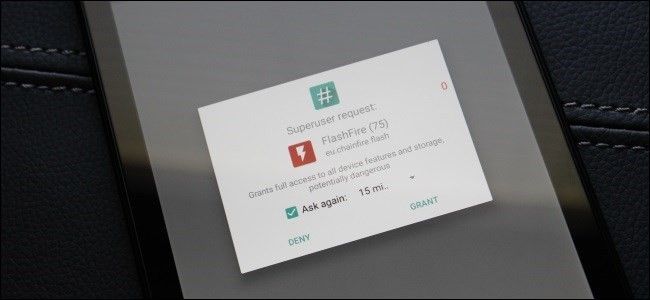Quick Links
Gaining root access on Android devices isn't a new concept, but the way it is done has changed with Android 6.0 Marshmallow. The new "systemless" root method can be a bit confusing at first, so we're here to help make sense of it all, why you'd want it, and why this method is the best way to root an Android phone moving forward.
What Exactly Is "Systemless" Root?
Before we get into what systemless root is, it's probably best that we first talk about how rooting "normally" works on Android, and what's required for it to do its job.
Since Android 4.3, the "su" daemon—the process that handles requests for root access—has to run at startup, and it has to do so with enough permissions to effectively perform the tasks requested of it. This was traditionally accomplished by modifying files found on Android's /system partition. But in the early days of Lollipop, there was no way to launch the su daemon at boot, so a modified boot image was used—this was effectively the introduction of the "systemless" root, named such because it doesn't modify any files in the /system partition.
A way to gain root access the traditional way on Lollipop was later found, which effectively halted progress on the systemless method at the time.
With the introduction of Marshmallow, however, Google strengthened the security that was first put in place in Lollipop, essentially making it unfeasible to launch the su daemon with the required permissions just by modifying the /system partition. The systemless method was resurrected, and that's now the default rooting method for phones running Marshmallow. It's also worth mentioning that this is also true for Android Nougat, as well as Samsung devices running 5.1 (or newer).
What Are the Advantages (and Disadvantages) of Systemless Root?
As with anything, there are advantages and disadvantages to gaining root access with the systemless method. The primary downside is that it doesn't work on devices with locked bootloaders by default—there may be workarounds, but they're very specific to each device. In other words, if there is no workaround for your device and it has a locked bootloader, there's essentially no way of gaining root access.
Other than that, however, the systemless method is generally better. For example, it's much easier to accept over-the-air (OTA) updates when you're rooted using this method, especially when using a tool like FlashFire. FlashFire can flash stock firmwares and re-root them while flashing, as well as handle OTA installation (again, re-rooting it while flashing). Basically, if you're running a rooted device, FlashFire is a good tool to have. Keep in mind that it's currently still in beta, but development is making good progress.
The systemless root method is also much cleaner, since it doesn't add or modify files in the /system partition. That means it's much easier to unroot your phone, too. It doesn't even survive a factory reset, so it's much simpler to make sure devices are unrooted and wiped clean before selling them.
Of course, that last bit is a double-edged sword, as some users would prefer to stay rooted after factory resetting their device—the good news is that you need only re-flash the appropriate SuperSU file to re-gain root access, which is easy. And if you want to unroot without performing a factory reset, you can just flash a clean boot image for your device. One command prompt command and you're done.
It's also worth noting that there are certain services, like Android Pay, that simply won't work on rooted devices. At one point, Pay did work on systemless devices, but this was completely accidental. There are currently no plans to try and bypass Pay's protection on rooted devices.
So Which Method Should I Use?
The good news is, you don't really have to "decide" which root method to use. When you flash SuperSU, it will decide which rooting method is best for your phone, and act accordingly. If your phone is running Lollipop or older, it will most likely use the /system method. If it's running Marshmallow or newer (or if it's a Samsung device running 5.1 or newer), it will modify your boot image instead, giving you a systemless root.
It's unlikely that the systemless method will ever become backwards compatible for older versions of Android, as that would require a significant amount of work for dozens of devices that will either be upgraded to a newer version of Android or retired. Thus, the focus for this new method is being put on Android Marshmallow and Nougat.
Android is a complex system, and obtaining root access can open the door to unlocking its full potential. That said, rooting your device isn't something you should take lightly—unless it's a developer or other bootloader-unlockable unit with stock images available, you should definitely tread carefully. Developers in the rooting community are going to great length to provide the best rooting experience possible, but that doesn't always mean it's going to work perfectly.
Thanks a lot to Chainfire for taking the time to answer our questions and help with this article!


